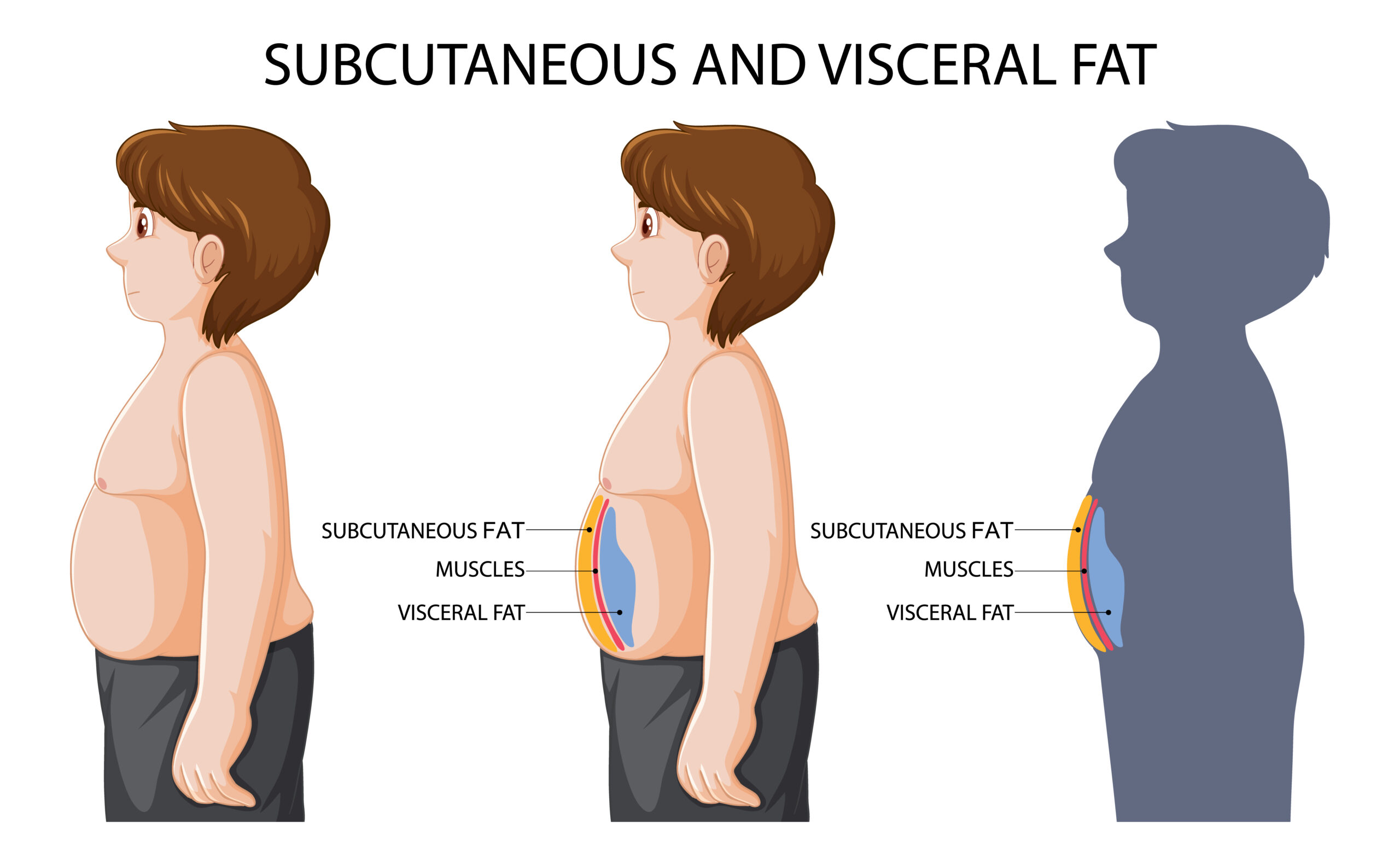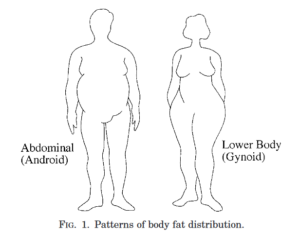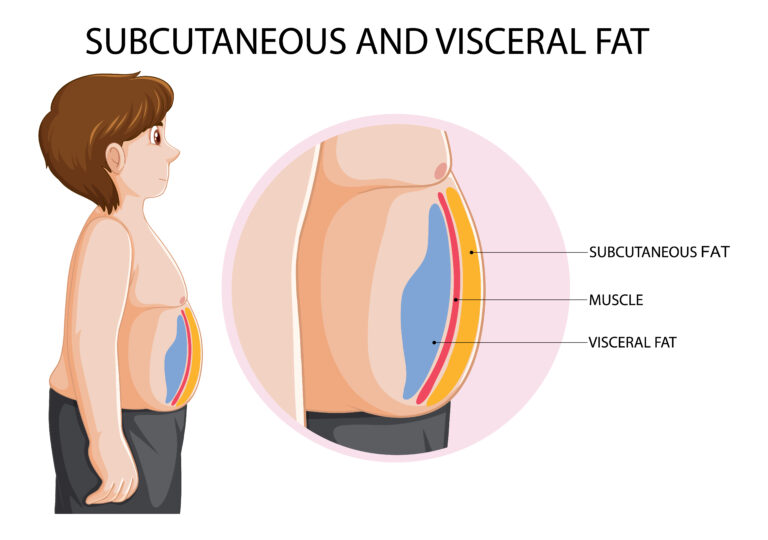Visceral Fat – Know the Enemy
Not all fat is created equal. Different types and different locations of fat have remarkably different effects on our health, yet there is very little awareness of this fact.
As body fat is the most visible manifestation of metabolic disease, we have a tendency to associate obesity with poor health. Individuals with metabolic complications such as cardiovascular disease and diabetes, however, are not necessarily more obese than individuals without these complications.
Obesity, then, by itself, is not a strong indicator of disease. The risk factor that is far more relevant than overall fat burden in predicting disease and mortality is the amount of visceral fat.
The enemy that lurks beneath the surface
Visceral fat is the fat that surrounds the internal organs of the body. In contrast to subcutaneous fat that is superficial and thus is “pinchable”, visceral fat is deep within the torso. The majority of visceral fat is located in the central abdomen and is responsible for causing protrusion of the abdomen, the so-called “beer belly”. Because it is inside the abdominal wall musculature, it cannot be grasped by one’s fingers as can the subcutaneous fat collections.

There are various compartments of visceral fat (intrathoracic, intra-abdominal, and intrapelvic) that are believed to have different metabolic properties.
Abdominal
Visceral fat is found within the peritoneal cavity in the abdomen. Given its location, visceral fat drains directly into the portal circulation (to the liver), thereby exposing the liver to high concentrations of fatty acids. This relationship is believed to explain why visceral fat is correlated with metabolic disease.
Epicardial
Epicardial fat is the fat closest to the surface of the heart, with which it shares the same microcirculation. This fat covering the surface of the heart appears to be a source of inflammatory factors that can directly affect the heart muscle. In addition, the overlying fat adds mass to the heart wall, which increases the amount of work performed by the heart and can lead to enlargement of the heart muscle over time. The amount of epicardial fat is associated with various aspects of the metabolic syndrome, including visceral adiposity, insulin resistance, fasting glucose, and atherosclerosis.
Pericardial/Mediastinal
Pericardial fat is anterior to epicardial fat and has been linked to coronary artery disease and atherosclerosis. It is also associated with degree of fibrosis in non-alcoholic fatty liver disease (NAFLD).
Perivascular
Visceral fat can be found surrounding blood vessels in varying amounts and plays a role in the regulation of vascular tone.
Intra-myocardial fat
There can also be fat storage within the cells of the heart muscle – the myocardium. When infiltrated by fat, these cells can be rendered dysfunctional and contribute to heart failure.
Male-Female Differences in Visceral Fat
There are important sex differences in the development of visceral fat. In general, men are more likely to store fat as visceral fat. Premenopausal women tend to store fat as subcutaneous fat, predominantly in the gluteal and femoral regions, a pattern driven by estrogen. As women transition into menopause, their decreasing estrogen levels drive an increase in a central distribution of fat and subsequent cardiometabolic risk.
The Repository for Excess Energy
There is significant variation between individuals in regard to their tendency to form visceral fat. Visceral fat appears to be the destination for excess energy storage, after the subcutaneous fat stores have reached capacity. How much fat can be stored in the subcutaneous fat depots is determined by the Personal Fat Threshold.
To a point, subcutaneous fat can be considered relatively benign, as it appears to have much less contribution to metabolic complications then central abdominal fat. Subcutaneous fat is, in effect, a partitioning of energy outside of the active circulation.
Visceral fat, however, is universally pathologic due to its prominent role in cardiometabolic disease.
Risks of visceral fat
Visceral fat is an important component of the metabolic syndrome and is associated with cardiovascular risk, independent of other risk factors.
Visceral fat is a major predictor of coronary artery disease (CAD), with central abdominal fat predicting heart attack better than overall obesity. Similarly, there are also significant associations with atherosclerosis, calcified coronary plaques, and coronary artery calcium in young adults.
It appears that an increase of 1 kilogram of visceral fat is associated with a 10-point increase in blood pressure. Visceral obesity is also associated with high triglycerides (hypertriglyceridemia) and small, dense LDL particles which are more atherogenic (increased cardiovascular risk) than large, buoyant LDL particles.
As might be expected, then, reduction of visceral fat is associated with significant improvement of cardiometabolic risk factors.





